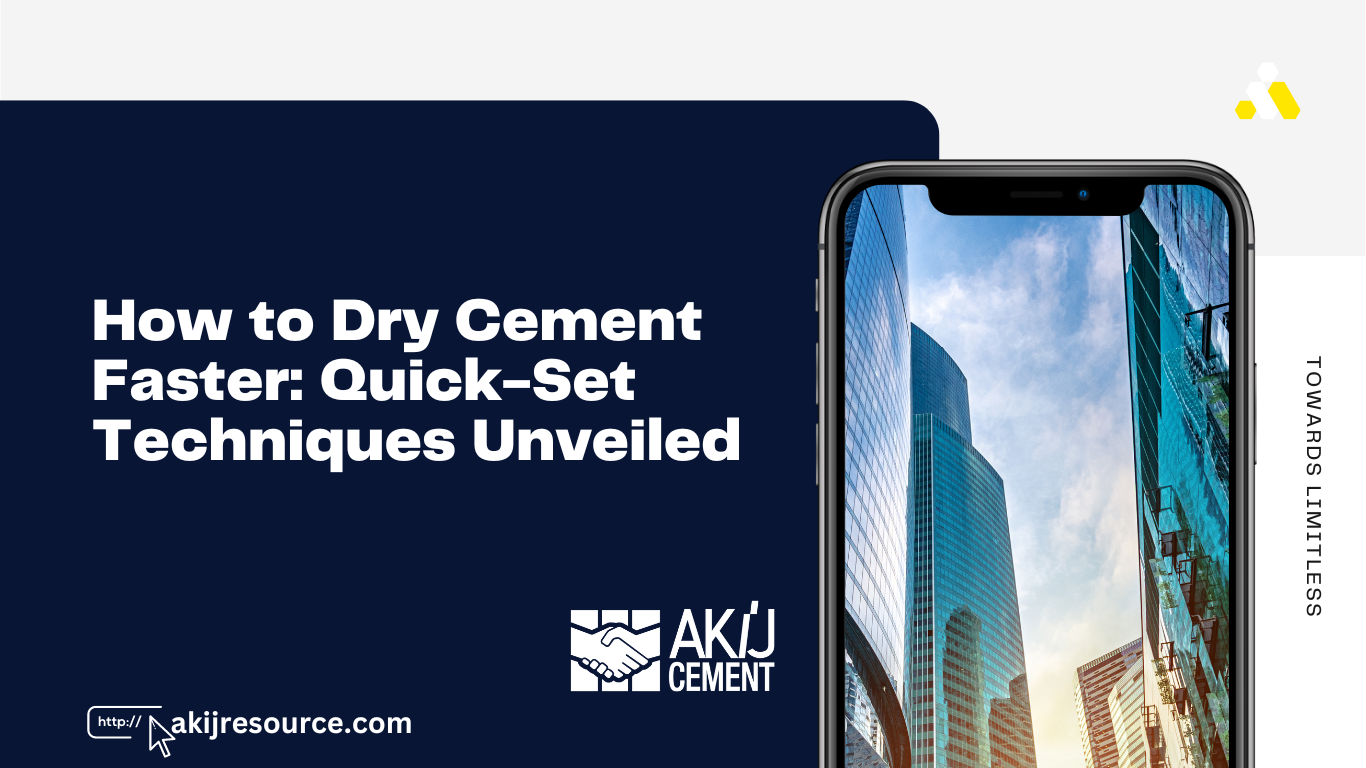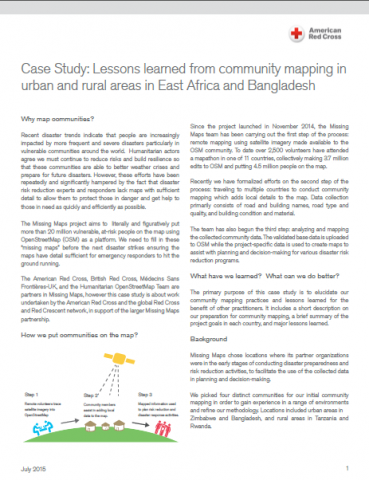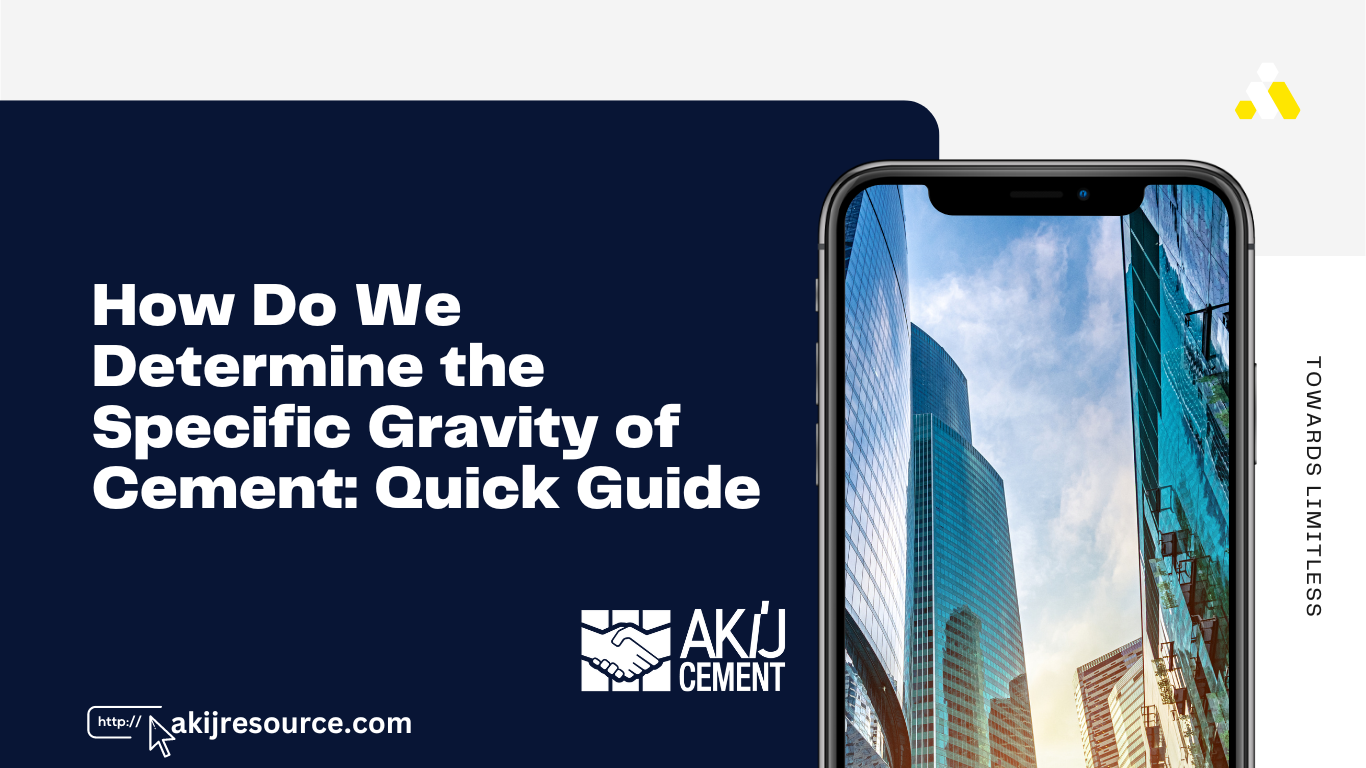To dry cement faster, use a low-water mix and ensure good ventilation. Applying heat accelerates the drying process.
Drying cement quickly can be crucial for many construction projects. Rapid drying allows work to continue without prolonged delays. Using a low-water mix helps reduce excess moisture, which speeds up the drying time. Proper ventilation is essential to facilitate the evaporation process.
Applying heat, such as using heaters or heat lamps, can further accelerate drying. Ensuring these conditions not only saves time but also ensures the cement sets properly. This minimizes the risk of cracking or weakening, leading to a more durable and stable structure. Employ these techniques to achieve optimal results in your cement-drying process.
Introduction To Quick-set Cement
Quick-set cement is a type of cement that dries faster than regular cement. It is perfect for projects that need to be completed quickly. This cement is often used in emergency repairs and construction.
Importance Of Drying Cement Quickly
Drying cement quickly can save time and money. It helps in completing construction projects faster. Quick drying prevents delays and allows for faster use of the area. It also reduces the risk of damage from bad weather.
Quick-set cement is also useful in emergency repairs. It can fix broken structures in a short time. This is crucial for safety and functionality.
Basic Chemistry Behind Cement Setting
Cement setting is a chemical process. It involves the reaction of cement with water. This reaction forms crystals that bind the materials together. The process is called hydration.
Quick-set cement has special additives. These additives speed up the hydration process. This makes the cement set faster than usual.
| Type of Cement | Setting Time |
|---|---|
| Regular Cement | 24 hours |
| Quick-Set Cement | 30 minutes |
- Use quick-set cement for urgent projects.
- Quick-set cement saves time and money.
- It sets in 30 minutes.
Pre-pouring Preparations
Pre-pouring preparations are crucial to ensure that your cement dries faster. Proper planning and execution can save time and improve the quality of your project. Below are the essential steps to take before pouring your cement.
Choosing The Right Cement Mix
Choosing the right cement mix is vital for a quicker drying time. Fast-setting cement mixes are specially formulated to dry faster. These mixes can cut drying time by several hours.
Refer to the table below for different types of cement mixes and their drying times:
| Cement Mix Type | Drying Time |
|---|---|
| Regular Cement Mix | 24-48 hours |
| Fast-Setting Cement Mix | 20-40 minutes |
| High-Strength Cement Mix | 1-2 hours |
Pick a mix that matches your project needs and time constraints. Always follow the manufacturer’s instructions for the best results.
Preparing The Work Area
A clean and well-prepared work area speeds up the drying process. Remove any debris, dirt, or vegetation from the area. Ensure the ground is level and compact.
Use a moisture barrier like a plastic sheet to keep the ground dry. This prevents water from seeping into the cement and slowing down the drying time.
- Clear debris and dirt
- Level and compact the ground
- Use a moisture barrier
Weather Considerations
Weather plays a significant role in how fast your cement dries. Sunny and dry conditions are ideal for faster drying. Avoid rainy or extremely humid days.
Check the weather forecast before planning your project. Use tents or tarps to protect your work area from unexpected rain. This helps maintain optimal drying conditions.
- Check the weather forecast
- Prefer sunny and dry days
- Use tents or tarps if necessary
Following these steps ensures your cement dries as quickly as possible. Proper pre-pouring preparations make a significant difference in the drying time.
Effective Mixing Methods
Drying cement quickly can be crucial for many construction projects. Using effective mixing methods can make a big difference. This section will explore some proven techniques to speed up the drying process.
Optimal Water-to-cement Ratio
The water-to-cement ratio is a key factor. Use the right amount of water to ensure proper consistency. Too much water can delay drying. Too little water can weaken the mix.
Here is a simple table to guide you:
| Water (Liters) | Cement (Kilograms) |
|---|---|
| 0.45 | 1 |
| 0.50 | 1 |
| 0.55 | 1 |
Use less water for faster drying but ensure the mix is workable.
Incorporating Additives
Additives can speed up the drying process. Accelerators are the most common additives. They help the cement set faster.
Here are some popular additives:
- Calcium chloride
- Triethanolamine
- Sodium silicate
These additives help the cement dry quickly. Always follow the manufacturer’s instructions for best results.
Mechanical Mixing Techniques
Using the right mixing equipment can also speed up the process. Mechanical mixers ensure a uniform mix.
Follow these steps for effective mixing:
- Measure the correct amount of water and cement.
- Start the mixer and add water first.
- Gradually add cement to the mixer.
- Mix until you get a consistent blend.
Mechanical mixing reduces lumps and ensures even distribution. This leads to faster drying times.
Pouring Techniques For Faster Setting
Fast-setting cement is crucial for many construction projects. Employing the right pouring techniques can significantly reduce drying time. Below, we explore effective methods to achieve this goal.
Layering Strategy
One effective method is using a layering strategy. Instead of pouring all the cement at once, divide it into smaller layers. This approach ensures each layer dries faster due to increased surface area.
Start by pouring a thin layer of cement. Allow it to set slightly before adding the next layer. Repeat this process until the desired thickness is achieved. This method helps in achieving a uniform and faster drying process.
Benefits of Layering:
- Quick initial set for each layer.
- Better control over the setting process.
- Reduced risk of cracks and shrinkage.
Vibration To Remove Air Pockets
Another critical technique is using vibration to remove air pockets. Air pockets can slow down the drying process and weaken the cement structure.
Use a concrete vibrator to eliminate trapped air. Move the vibrator slowly through the poured cement. This action ensures that all air bubbles rise to the surface, leaving a denser and quicker-setting mix.
Steps to Use Vibration:
- Pour the cement into the desired area.
- Insert the concrete vibrator vertically into the cement.
- Move it around slowly to ensure all air pockets are removed.
- Repeat until the entire area is free of air bubbles.
Advantages of Vibration:
| Advantage | Description |
|---|---|
| Faster Drying | Air removal speeds up the setting time. |
| Increased Strength | Denser cement leads to a stronger structure. |
| Improved Finish | Smoother surface without air pockets. |
Curing Agents And Accelerators
Drying cement faster can be a challenge. Curing agents and accelerators are effective tools to speed up the process. These materials help cement set and harden quickly, reducing the overall drying time. Understanding their types and application methods is essential for achieving the best results.
Types Of Accelerators
Accelerators are chemicals added to cement to speed up the curing process. Here are some common types:
- Calcium Chloride: This is the most popular accelerator. It is affordable and easy to use.
- Sodium Nitrate: It is less common but effective in cold weather conditions.
- Potassium Carbonate: This is another option, especially for high-strength concrete.
- Non-Chloride Accelerators: These are ideal for steel-reinforced structures to prevent rusting.
How To Apply Curing Compounds
Curing compounds help retain moisture in the cement. This ensures it hardens properly. Follow these steps to apply curing compounds effectively:
- Prepare the Surface: Clean the cement surface to remove dirt and debris.
- Choose the Right Compound: Select a curing compound suitable for your project.
- Apply Evenly: Use a sprayer or roller to apply the compound evenly.
- Follow Manufacturer’s Instructions: Adhere to the recommended drying times and application methods.
Here is a table to summarize the types of accelerators and their uses:
| Type of Accelerator | Use |
|---|---|
| Calcium Chloride | General use, affordable |
| Sodium Nitrate | Cold weather conditions |
| Potassium Carbonate | High-strength concrete |
| Non-Chloride Accelerators | Steel-reinforced structures |
Using curing agents and accelerators can significantly reduce cement drying time. Understanding their types and application methods ensures optimal results.
Temperature’s Role In Cement Setting
Temperature is a crucial factor in the setting and curing process of cement. The right temperature ensures the cement sets properly, resulting in a strong and durable structure. If the temperature is too low, the setting process slows down. Conversely, high temperatures can cause the cement to dry too quickly, leading to cracks and weaknesses. Therefore, understanding and controlling temperature is essential for successful cement projects.
Controlling Environmental Temperature
Managing the environmental temperature is key to drying cement faster. Ideal temperatures for setting cement range from 50°F to 90°F (10°C to 32°C). If the temperature falls outside this range, take measures to regulate it.
Here are some tips for controlling the environmental temperature:
- Monitor the weather forecasts to plan your cement work around favorable temperatures.
- Use tarps or windbreaks to shield the cement from cold winds.
- Create shade to protect the cement from direct sunlight on hot days.
Using Heaters Or Blankets
Sometimes, natural methods are not enough to maintain the ideal temperature. Heaters and thermal blankets can be very effective in controlling cement temperatures.
Heaters: Place portable heaters around the cement area. Keep them at a safe distance to prevent overheating. Ensure even heat distribution for consistent drying.
Thermal blankets: Cover the cement surface with thermal blankets. These blankets trap heat and keep the cement warm. They are especially useful during cold weather.
| Method | Benefits | Considerations |
|---|---|---|
| Heaters | Effective in maintaining temperature | Ensure even heat distribution |
| Thermal Blankets | Traps heat and keeps cement warm | Useful in cold weather |
By understanding the role of temperature and using tools like heaters and thermal blankets, you can speed up the cement setting process and ensure a durable, high-quality finish.
Post-pouring Care
Taking care of freshly poured cement is crucial. Proper post-pouring care can speed up the drying process. It also ensures the cement’s durability and strength.
Protecting Fresh Cement
Fresh cement is vulnerable. Protecting it from external elements is essential. Cover the cement with plastic sheets or tarps. This prevents exposure to rain and debris.
Using barriers or fencing around the site is also helpful. This keeps foot traffic and animals away. It ensures the cement remains undisturbed.
Moisture Control During Curing
Controlling moisture is vital for curing. Keep the cement surface moist for the first few days. This helps in achieving maximum strength.
| Method | Description |
|---|---|
| Spraying Water | Lightly spray water on the surface. Do this multiple times a day. |
| Wet Covering | Use wet burlap or mats to cover the cement. Keep them wet. |
| Curing Compounds | Apply curing compounds to retain moisture. Follow product instructions. |
Prevent the cement from drying too quickly. Quick drying can cause cracks and weaken the structure. Always monitor moisture levels during the curing process.
Troubleshooting Common Problems
Drying cement faster can sometimes lead to problems. Understanding these issues helps you solve them quickly. Let’s explore common problems and their solutions.
Dealing With Slower Set Times
Slower set times can delay your project. Here are a few tips to speed up the process:
- Use warm water: Mixing cement with warm water can accelerate curing.
- Reduce water content: Less water means faster drying. But do not overdo it.
- Add accelerators: Chemical accelerators can shorten drying times.
- Cover the surface: Use plastic sheeting to retain heat and moisture.
Addressing Cracking And Shrinkage
Cracking and shrinkage can ruin your cement. Follow these steps to avoid these issues:
- Cure properly: Keep the cement moist for the first few days.
- Avoid overmixing: Overmixing can introduce too much air, leading to cracks.
- Control temperature: High temperatures cause rapid drying and cracking.
- Use fibers: Fibers in the mix can reduce shrinkage and cracks.
Here is a table summarizing the common problems and solutions:
| Problem | Solution |
|---|---|
| Slower Set Times | Use warm water, reduce water content, add accelerators, cover the surface |
| Cracking and Shrinkage | Cure properly, avoid overmixing, control temperature, use fibers |
Innovative Quick-set Cement Products
Innovative quick-set cement products are changing the construction industry. These products help you save time and improve efficiency. They are perfect for projects that need fast completion.
New Market Options
The market now offers many new quick-set cement options. These products are designed to set faster than traditional cement. They are ideal for both small and large projects.
- Rapid Set Concrete Mix: This mix is perfect for small jobs and repairs. It sets in just 15 minutes.
- Fast-Setting Cement: Ideal for larger projects, this cement sets within an hour.
- High-Early Strength Cement: This type gains strength quickly, making it useful for structural work.
Comparing Product Efficacy
Comparing the efficacy of these products helps you choose the best option. Each product has different setting times and strength gains.
| Product | Setting Time | Strength Gain | Best Use |
|---|---|---|---|
| Rapid Set Concrete Mix | 15 minutes | Medium | Small jobs, repairs |
| Fast-Setting Cement | 1 hour | High | Larger projects |
| High-Early Strength Cement | 2-4 hours | Very high | Structural work |
Each of these products offers unique benefits. Choose one based on your project’s needs. This ensures you get the best results and save valuable time.
Using these innovative quick-set cement products can make your work easier and faster. They help you complete projects quickly without compromising quality. This is a game-changer in the construction industry.
Safety Considerations And Best Practices
Drying cement faster requires proper attention to safety. Following best practices ensures the job is done efficiently and safely. This section covers essential safety tips and best practices for handling quick-set materials.
Personal Protective Equipment
Wearing the right gear is crucial when working with cement. Here are some essentials:
- Gloves: Protect your hands from chemicals.
- Goggles: Shield your eyes from dust and splashes.
- Mask: Prevent inhalation of harmful particles.
- Boots: Wear sturdy, non-slip footwear.
- Long sleeves and pants: Cover your skin to avoid contact with cement.
Handling And Storage Of Quick-set Materials
Proper handling and storage of quick-set materials are key for safety and efficiency.
| Handling | Storage |
|---|---|
| Mix small batches to avoid wastage. | Store in a cool, dry place. |
| Use tools designed for cement work. | Ensure containers are sealed tightly. |
| Dispose of waste properly. | Keep materials away from moisture. |
Following these practices ensures the cement dries quickly and safely.
Case Studies
When working with cement, drying time can be a crucial factor. Understanding how to accelerate this process can save time and resources. Below, we will explore some real-life case studies that demonstrate effective methods to dry cement faster. These examples are divided into residential applications and commercial construction scenarios.
Residential Applications
In residential settings, homeowners and contractors often seek to expedite cement drying. For example, a homeowner in Florida needed to dry cement quickly for a new patio.
- They used calcium chloride as an additive to speed up the drying process.
- They placed tarps over the cement to protect it from rain.
- They ensured proper airflow using fans.
As a result, the cement dried within 24 hours, allowing the family to enjoy their new space sooner.
Commercial Construction Scenarios
In commercial construction, time is money. A construction company in New York needed to dry cement quickly for a new office building.
| Method | Details | Outcome |
|---|---|---|
| Heated Tents | They used heated tents to maintain a warm environment. | Cement dried in 12 hours. |
| Accelerating Agents | They mixed accelerating agents into the cement. | Decreased drying time by 30%. |
These methods allowed the company to stay on schedule and avoid costly delays.
Future Of Cement Technology
The future of cement technology is rapidly evolving. Innovations aim to make cement production faster, more sustainable, and efficient. Experts predict significant changes in how cement is produced and used.
Emerging Trends
New technologies are revolutionizing the cement industry. 3D printing with cement is becoming popular. This method allows for faster construction and reduces waste.
Self-healing concrete is another innovation. It repairs its own cracks, extending the lifespan of structures. This reduces the need for repairs and maintenance.
Using nanotechnology in cement production improves its properties. It increases strength and durability, making structures safer and longer-lasting.
Sustainability In Cement Production
Environmental concerns drive new practices in cement production. Companies are adopting low-carbon cement to reduce their carbon footprint. This type of cement emits less CO2 during production.
Recycling waste materials is another trend. Using industrial by-products like fly ash and slag in cement reduces waste. It also conserves natural resources.
Energy-efficient production methods are gaining traction. These methods use less energy, reducing costs and environmental impact. Innovations like these are crucial for a sustainable future.
| Innovation | Benefit |
|---|---|
| 3D Printing | Faster construction, reduced waste |
| Self-Healing Concrete | Longer lifespan, reduced maintenance |
| Nanotechnology | Increased strength and durability |
| Low-Carbon Cement | Reduced CO2 emissions |
| Recycling Waste Materials | Less waste, resource conservation |
| Energy-Efficient Methods | Lower energy use, cost savings |
Can Using Quick Techniques to Dry Cement Cause Any Hazards or Compromise Its Strength?
Using quick techniques to dry cement can compromise its strength and pose hazards. It’s important to follow proper drying methods to avoid cracks and weak spots. Quick tips for moisture extraction in cement include using dehumidifiers or fans, but take care to ensure the integrity of the structure.
Frequently Asked Questions
What Is The Fastest Way To Dry Cement?
The fastest way to dry cement is by using a low humidity environment, proper ventilation, and applying heat sources like heaters or lamps.
What Can You Add To Cement To Make It Dry Faster?
Adding calcium chloride accelerates cement drying. Use warm water and ensure proper mixing for faster results.
Does Heat Make Cement Dry Faster?
Yes, heat speeds up the drying process of cement. High temperatures cause water to evaporate faster.
How To Make Quick Drying Cement?
Mix cement with water, sand, and a quick-setting additive. Stir thoroughly until smooth. Apply immediately.
Conclusion
Drying cement faster can save time and increase efficiency. Use the tips mentioned to achieve quicker results. Remember, proper preparation and conditions are key. By following these guidelines, your cement projects will dry faster and be ready for use sooner.
Optimize your construction process with these simple yet effective methods.






















